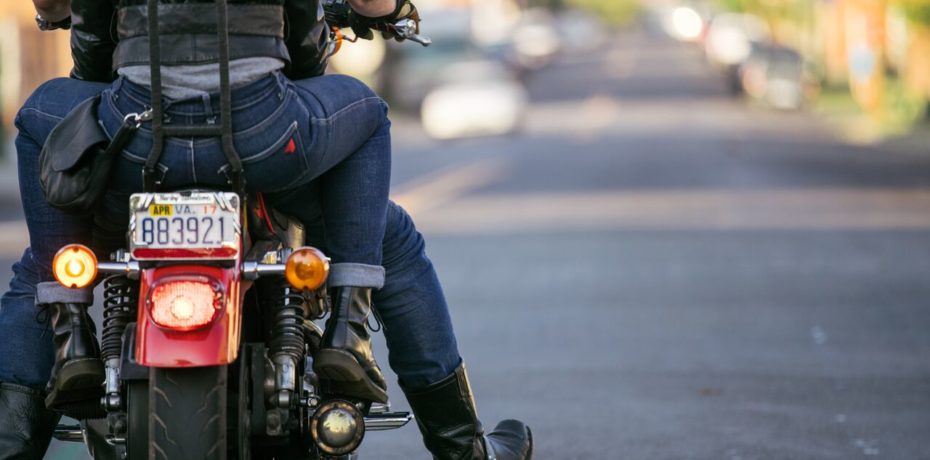By Paul Spicer
Laura Smith’s ex snuck a rusty 1981 Suzuki GS450L into her apartment late one fall night. The bike had more problems than she knew how to fix, but it was all hers. And she loved it.
Over that winter the two spent time taking the bike apart. They cleaned it – piece by piece – and then they put it back together again.
“That was the winter I learned that you can boil carburetor parts on your stovetop to clean them, but that you probably shouldn’t use the same pot you’d planned to cook dinner in later that evening,” recalls Smith. “We ended up ordering pizza that night.”
That was 20 years ago. Back then there weren’t a lot of women riding their own bikes. So when Smith wasn’t riding with her ex, she was flying solo. At least until she taught her best girlfriend to ride her Suzuki too, a bike that she eventually gave to her friend once Smith scored her second ride.
“We’d make up reasons why we needed to ride across town – shopping, the post office, some widget from the hardware store. Any excuse to spend more time on our bikes,” says Smith. “She and I became masters at cramming two weeks’ worth of groceries in a couple of battered saddlebags.”
Years later that Suzuki still holds a place in Smith’s heart as the bike that made her fall in love with motorcycling. Since that time she has owned plenty of other bikes, at least 16. “Motorcycles are a lot like tattoos,” explains Smith. “Once you get your first one, it’s hard to stop there.”
But when she first started riding, Smith says she was forced to wear men’s gear, even though it was way too large. “There just weren’t any other options available at the time,” she says. “Later on came the ‘shrink it and pink it’ phase of women’s motorcycle apparel. Essentially, that’s gear that was designed for a man, then scaled (poorly) to a smaller size, made of thinner material, and finally covered in pink embroidered butterflies and swirls. You know, for the ladies.”
While female riders have grown significantly over the last decade, larger apparel companies have chosen to ignore the demand until recently. This is especially true when looking for gear made in the USA. Smith knew that she could create a business that filled the need for women’s gear that fits well, provides protection, and looks good both on and off the bike.
Firmly entrenched in the maker community, Smith and her husband/business partner, Scott Saunders, went to work on their own apparel brand after a conversation over drinks one evening in Austin. Smith was a teacher and graphic designer, who had always been handy with a sewing machine. And Saunders, a sculptor and web application developer, had long had a similar hankering for making things with his hands. Together, the two knew they could figure out just about anything.
They named their venture Worse for Wear, and set out on a mission to address the underserved market of women’s motorcycle apparel. With equal parts skill and motivation, Smith and Saunders tracked down about a dozen used, industrial sewing machines to get started. Though coated in grease, they tinkered with the machines, replaced parts, and eventually restored the motors until each was running again.
The first product to launch was a straight-leg, mid-rise style of women’s riding jeans. Made in two colors, the denim came complete with built-in abrasion resistance and removable, CE-Approved impact protectors for the knees and hips. For just the right fit, the new business owners made sure to provide their fashionable – yet safe – jeans in sizes based on a rider’s natural waist measurement instead of women’s apparel sizes.
To make the business work just as they envisioned it, the duo knew they would need to create an apparel workshop from the ground up in order to control the entire process. From design to prototyping and from development to production, everything at Worse for Wear happens in-house at their 5,000-square-foot manufacturing space in Scott’s Addition.
Today, many of the initial sewing machines the couple repaired are still buzzing in their three-story workspace. And the product line they’ve created has expanded to include the Crosstown Curvy Jeans, the Crosstown Slim Jeans, a variety of popular t-shirts, and more items to come.
“That spirit of innovation is intoxicating,” says Smith. “We’re constantly driven to make our products better and to improve our manufacturing processes. It’s hard for us to develop a product without thinking of ways to improve it. We’ll geek out for hours over belt loop placement or researching stronger thread or seam options. Sometimes we go a little nuts about getting things absolutely perfect, but that’s part of the fun.”
Along the way, the owners of Worse for Wear have worked to promote safe motorcycling through The Litas, a local women’s riding group, and sponsorships like RVA Bike Night. Smith is also a board member of Engine and Frame, a nonprofit organization providing education and space for people to repair and maintain their own motorcycles.
And about that old Suzuki that started it all, Smith says she wouldn’t hesitate to snatch up another GS450L if she spotted one in running condition. This time, however, she’d ride it wearing fashionable products made for women by a woman.

